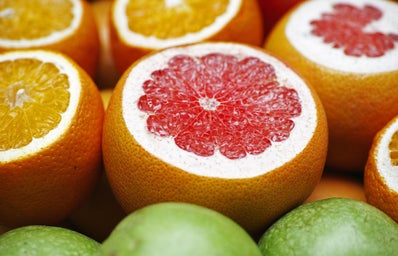“Ew, but sage smells like weed,” say most people.
To the untrained nostril, the smell of sage is reminiscent of marijuana. But, those who know the difference also know the difference in the physical, mental and spiritual benefits of burning sage and other spices.
Physical and mental properties of burning spices
Most sacraments like sage and Palo Santo have major health benefits. Honestly, they’re the first matters dealt with in my cold and flu season kit. Mental and physical effects of sage differ from the mental and physical effects of bay leaves or any other spice. And, while the science behind some of these effects has not been thoroughly tested, many users including myself will testify that they work.
Sage, depending on which strain, is used for its antimicrobial and antibacterial properties. Sickness is no match for sage. That’s why it’s known best for its cleansing characteristics.
Palo Santo is renowned more for its spiritual properties than physical. But, the holy wood is also a great antimicrobial, anti-inflammatory and has a knack for ridding people of headaches and lung-related issues. Drinking it in tea is also a digestive aid.
Bay leaf usage ranges from antibacterial, anti-fungal purposes to helping increase sleepiness and reducing pain, convulsions and inflammation. The leaves are also edible, and when eaten, bay leaves can manage glucose and cholesterol levels.
Patchouli uses range the most. Burning patchouli can get rid of insects, reduce depression, decrease inflammation and there is a longer list of things that affect people as deep as their bloodstream.
Lavender is popular because burning it reduces stress and helps people fall asleep.
Frankincense, since biblical times, has been highly revered in the spiritual community. From an aromatherapy standpoint, frankincense’s health benefits extend to banishing colds, congestion, bronchitis, labor pains and enhancing mood and sleep.
Myrrh is the sister of frankincense as it’s from the same plant family, so it carries the same properties with some different ones. In addition to what frankincense can do, myrrh heals skin diseases, helps sleep, aids uterine health, improves digestion and many more health ailments.
Spiritual properties released while burning
Mainly sage and Palo Santo, but also frankincense and myrrh, are used in spiritual ceremonies to cleanse. These purify and consecrate the setting of the ceremony and whatever objects or people are involved. Such spiritual ceremonies can be as small as detoxing yourself from a bad day when you get home. People often call this smudging. To “smudge” is to burn sage with the purpose of cleansing negativity while replenishing positive, healing energies to a certain space, person or object. That’s not to say their uses are limited to ceremonies as all of these herbs and spices generally cleanse and raise good vibrations.
Other aspects of spirituality that utilize the burning of herbs and spices are prayer and meditation. When praying, lavender is often burned to help lift prayers into the air and unto the spirit–or whatever you subscribe to. Lavender and rose are some of the highest vibrational substances known to man. Burning lavender and rose, or just the dissemination of their oils, lifts the air and spirit to a higher vibe or frequency. “Lifting frequencies” means shifting to a higher state of being that’s closer to love. And to live as love is the highest state of being in regards to spirituality. Reaching a higher state of being is also done through meditation, which is why lavender and rose are also used during meditation. Other herbs and spices like patchouli, nag champa and sandalwood raise frequencies in a similar fashion, which is why they’re burned in meditation circles, too.
Other forms of sage and spiaces
If you aren’t comfortable burning things, you can invest in other versions of these herbs and spices. Several spices and herbs are pressed for their oils and often sold as essential oils. Their qualities aren’t changed, but you have to have an essential oil diffuser to reap the same levels of spiritual and health benefits as that of burning spices. Or, you can dab some of the oils on your skin, hair or clothes for a more personal effect. Many herbs and spices have gone through the same process of having their oils pressed into candles and incense, which is a more low-key version of burning. Just watch out for mass-produced versions of these from companies okay with using carcinogens and other toxic by-products.
Pro tip: Because we’re all college students here, I should tell you candles and incense aren’t usually detectable in most dorms. But, people will probably smell it in the hall and accuse you of doing drugs. Plus, it’s still a fire hazard if you leave something unattended and burning. If you set the fire alarm off you’ll be fined, and could encounter other horrible consequences. So, your best bet is an essential oil diffuser or incrementally burning the actual thing.
(If anyone asks how I know this, I plead the fifth.)
How to get started
It’s becoming super accessible to find sage, Palo Santo, incense, candles and essential oils in the herbs and spices collection. You can find them in a shop you like on Etsy or Instagram. I always recommend Tribu Spirit for the best shamanic tools and spiritual accessories (you can find them on social media, too). As long as you have an organic version of your favorite sage or spice to burn you have all you need. You can invest in abalone shells and fancy feathers for a more ceremonial or ritualistic approach. Inevitably, your practice is up to you and should fit your needs. My last recommendation is when burning sage and other spices it’s important to burn with intention. Intention directs the energy and can make the physical and mental effects as well as the spiritual much more potent. Strong, positive intentions lead to strong, positive results.



